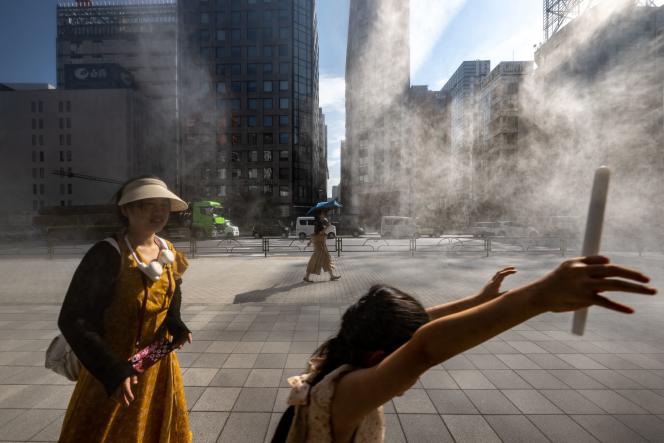Like every day this summer, the Japanese received a heat alert on their mobile phones on Tuesday 5 September, accompanied by calls for “avoid intense sporting activities” and to “beware of heatstroke”. The message nothing exceptional in a country accustomed to the grueling humid heat of summer. But, like what is happening in the rest of the world, the summer of 2023 appears to be a record season in the archipelago with abnormally high temperatures, against a backdrop of relative sluggishness of a government on action in favor of the climate.
1er September, the Japan Meteorological Agency (JMA) painted a worrying picture of summer, characterized by “significantly higher temperatures” to seasonal norms. The 2023 average was 1.76°C above usual normals. Never had the gap been so large. The previous record of 1.08°C dated back to 2010.
Also according to the JMA, Tokyo recorded 59 consecutive days at more than 30 degrees, unheard of and the series continued on September 5. Elsewhere in Japan, the cities of Komatsu (Ishikawa prefecture, center) and Date (Fukushima prefecture, northeast) recorded 40 degrees for the first time. Toyooka suffered 22 days at 35 degrees, a record for this city in the department of Hyogo (West). Sea surface temperatures around Japan are also a degree above average. It has never been so hot since the recording of this measure began in 1982.
Fifty-three people died
This heat has health consequences. In July, almost 50,000 people were hospitalized for heatstroke, 53 died. These record temperatures are also accompanied by a rainfall deficit, with impacts on the water supply. Just 90 millimeters of rain fell in July in the upper reaches of the Tone River, a far cry from the usual 230 millimeters. “The level of the nine dams on the river, which concentrates most of the water reserves for Tokyo and its region, was at 67% of capacity on August 24, against 80% on average”explained Muto Kenji, of the Ministry of Lands. “Restrictions of 10% of water consumption could be decided if the reserves fell below 50%. » Such a measure had already been taken in 2016.
The governor of Tokyo, Koike Yuriko, already called on the population on August 18 to restrict water consumption. “A difficult situation is emerging in some places. I ask everyone’s cooperation to save water”she explained.
You have 44.13% of this article left to read. The following is for subscribers only.
